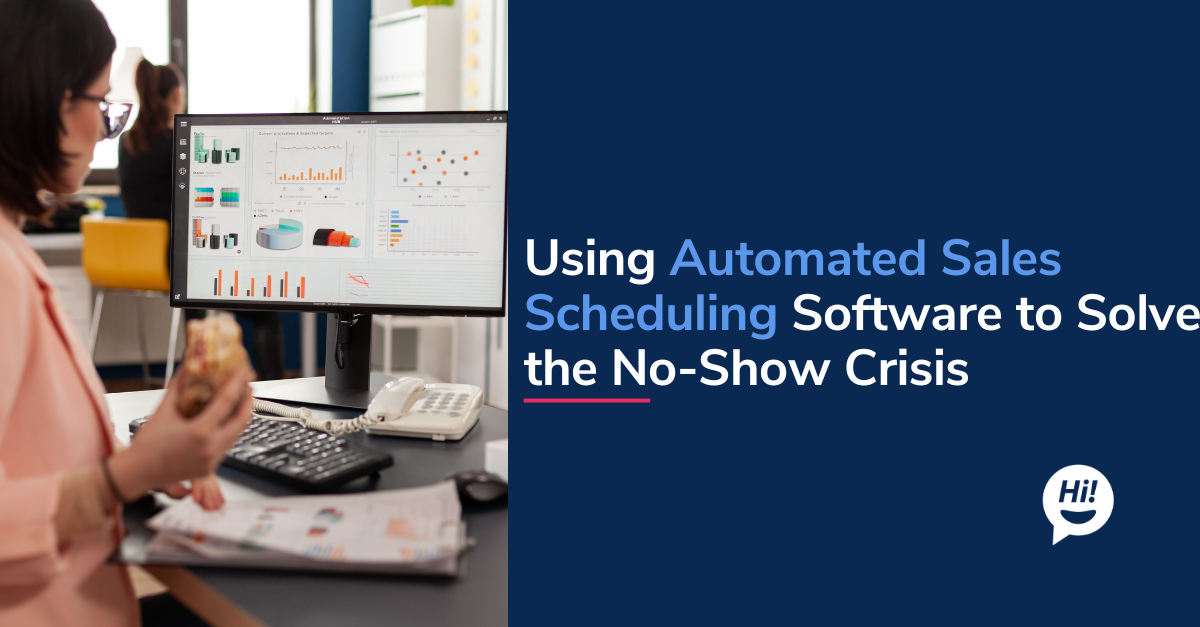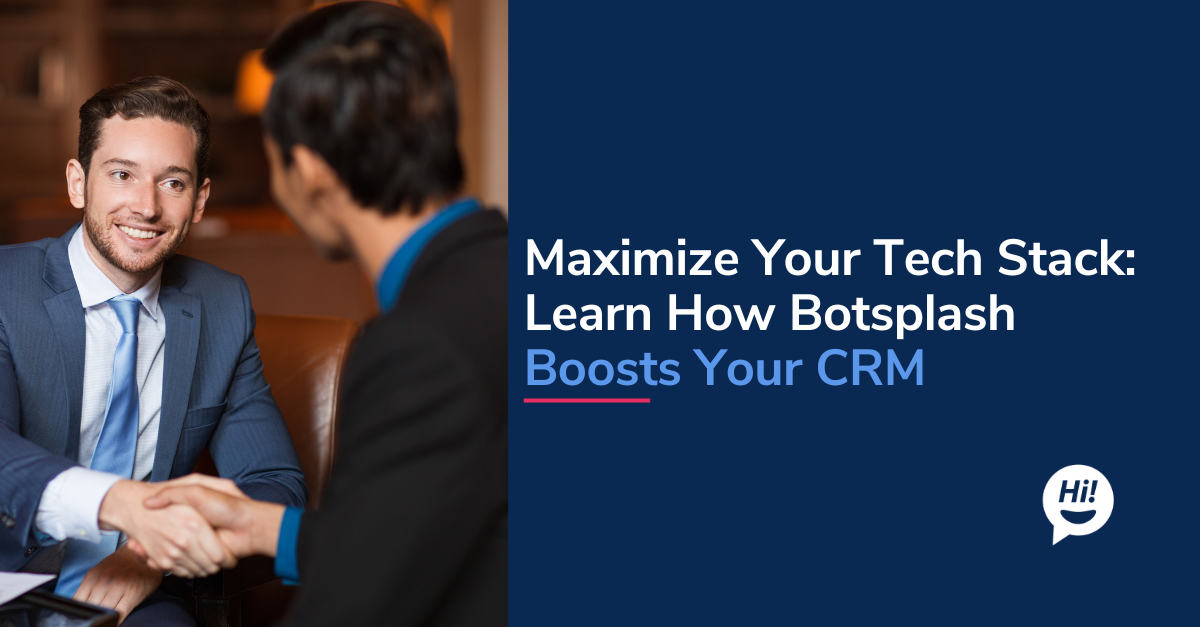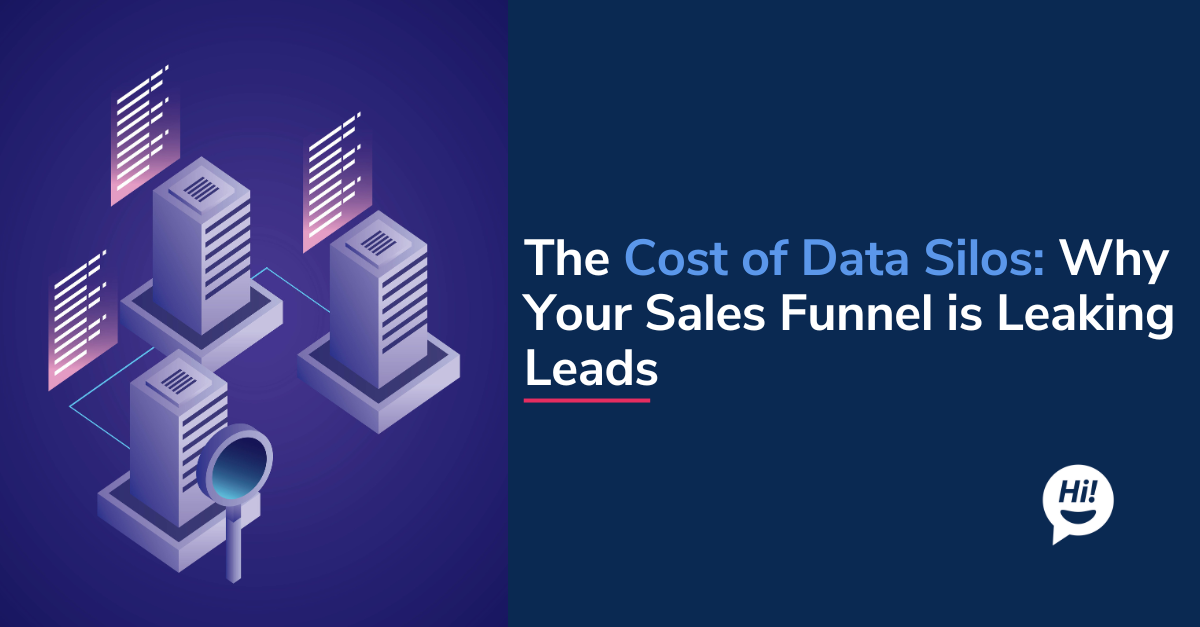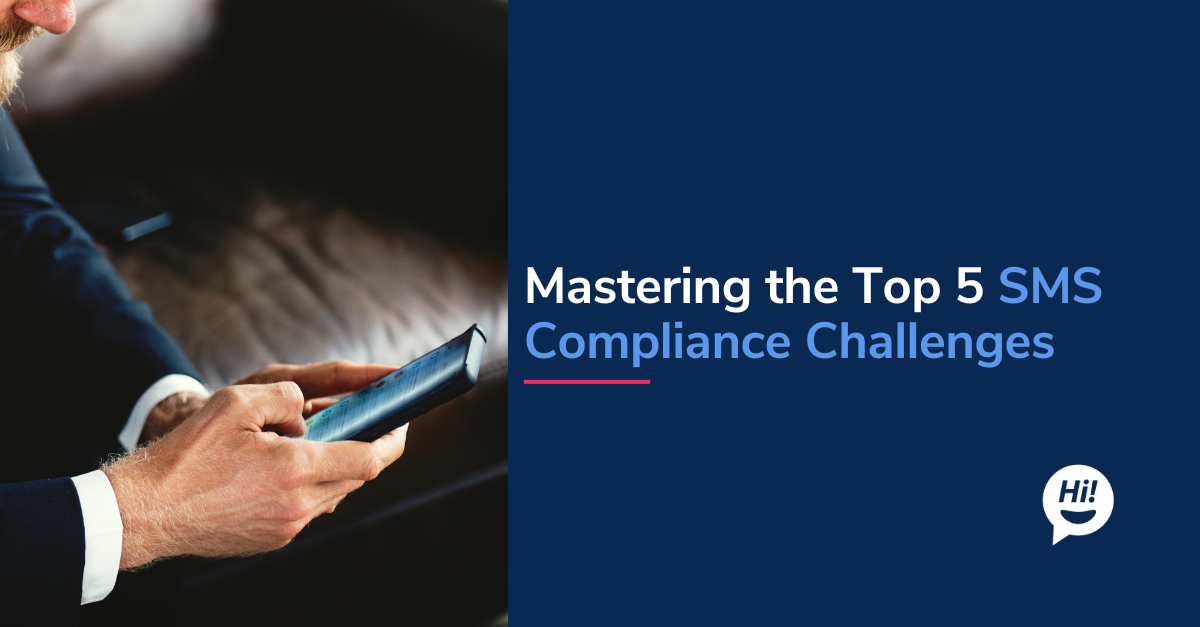Imagine nurturing a customer relationship so strong that they become a vocal advocate for your brand, driving repeat business without extra acquisition costs. Did you know that repeat customers spend up to 67% more than new ones? This powerful statistic underscores the immense value of customer loyalty in today's cutthroat market. Loyalty isn't just about repeat purchases; it's about forging a deep emotional connection and inspiring genuine advocacy. However, cultivating and maintaining this level of dedication manually in a vast customer base is incredibly challenging.
This comprehensive guide will delve into the transformative power of customer loyalty automation, exploring how strategic implementation of marketing automation, customer retention tactics, and automated loyalty programs can foster deeper relationships, drive repeat business, and significantly enhance Customer Lifetime Value (CLTV).
The Shifting Landscape of Customer Loyalty: Why It's More Critical Than Ever
In the current digital age, the very nature of customer loyalty has undergone a fundamental shift, making its cultivation more critical—and challenging—than ever before. The explosion of online commerce and information has led to increased competition and choice for consumers. With countless alternatives just a click away, switching brands has become effortless. This means businesses can no longer rely on convenience or limited options to retain their customer base.
Simultaneously, customer expectations have undergone a dramatic evolution. Today's consumers demand more than just a good product or service; they expect highly personalized experiences, instant gratification, and increasingly, alignment with their values regarding social responsibility or sustainability. If these expectations aren't met, loyalty quickly wavers.
This volatile environment underscores the actual cost of churn. Losing an existing customer is not only far more expensive than retaining one due to acquisition costs, but it also means losing potential word-of-mouth marketing and valuable feedback. Conversely, loyal customers represent an invaluable asset. They aren't just repeat purchasers; they often become fervent brand advocates, driving organic growth through referrals and positive reviews. Relying on traditional, manual loyalty efforts—such as generic newsletters or sporadic outreach—is insufficient to meet the scale and personalized demands of today's market. Automation has become essential to foster and sustain customer loyalty truly.
What is Customer Loyalty Automation?
While loyalty programs often conjure images of punch cards and points systems, customer loyalty automation delves much deeper. It's the strategic application of technology, leveraging marketing automation platforms, CRM systems, and even Artificial Intelligence, to systematically deliver personalized, timely, and relevant communications and experiences to your existing customers. The goal is to nurture their continued engagement, foster deeper connections, and transform them into enthusiastic brand advocates.
Crucially, customer loyalty automation distinguishes itself from initial lead acquisition and nurturing. Its focus begins after the first purchase or initial engagement, concentrating specifically on extending the customer lifecycle and maximizing their lifetime value.
The core components typically involved in this automated approach include:
- Automated Triggered Campaigns: These are pre-designed communication sequences (such as emails, SMS, or in-app messages) that are automatically activated by specific customer actions or milestones, including a purchase, subscription renewal, anniversary, or a period of inactivity.
- Behavioral Segmentation for Existing Customers: Automation platforms enable you to segment your customer base not only by demographics, but also by their actual behavior – including the products they use, their frequency of engagement, the content they consume, and their spending habits. This enables hyper-targeted campaigns.
- Personalized Content Delivery: Leveraging the power of automation, you can deliver content that is dynamically tailored to each customer's preferences, past purchases, or expressed interests, making every interaction feel unique and relevant.
- Integration with Loyalty Programs: For businesses with formal loyalty programs, automation seamlessly manages enrollment, tracks points accumulation and redemption, notifies customers of tier upgrades, and delivers personalized rewards.
- Feedback Collection Mechanisms: Automated surveys or conversational prompts sent after a purchase or support interaction allow businesses to gather valuable customer feedback at scale, which can then be used to refine products, services, and the overall customer experience.
The key benefits of embracing automated loyalty are immense: it provides unparalleled scalability, ensures consistency in your messaging, enables truly hyper-personalization even across vast customer bases, and drives remarkable efficiency in marketing automation and customer retention efforts.
Pillar 1: Post-Purchase Automation for Immediate Delight & Onboarding
The moment a customer makes a purchase is not the end of their journey; it's the beginning of the crucial post-purchase phase. This period is paramount for establishing long-term customer loyalty. How you engage with a customer immediately after they've purchased from you can profoundly influence their satisfaction, adoption of your product or service, and likelihood of returning.
- The Critical First Impressions: Post-purchase interactions set the tone for the entire customer relationship. This is where you can either reinforce their decision and build excitement, or leave them feeling forgotten. Automation is key to ensuring these first impressions are consistently positive and impactful.
- Automated Onboarding Sequences: For products or services that require setup or learning, automated onboarding is indispensable.
- Welcome Emails/SMS/In-App Messages: Send a warm welcome immediately after purchase.
- Tutorials, Tips, and Best Practices: Deliver a series of helpful content (e.g., short videos, step-by-step guides) that teach them how to use your product effectively, reducing frustration and speeding up adoption.
- Setting Expectations and Guiding New Users: Clearly communicate next steps, support channels, and what they can expect from their new purchase.
- Order Confirmation & Follow-Up: Basic, yet critical.
- Personalized Confirmations: Send instant, personalized order confirmations and receipts.
- Shipping/Delivery Updates: Proactively provide tracking information and delivery notifications to reduce "where's my order?" inquiries.
- Proactive Troubleshooting Tips: Based on the specific product purchased, send automated tips (e.g., "Troubleshooting your new gadget: common issues and quick fixes") to prevent early problems.
- Soliciting Early Feedback: Show You Care from the Start.
- Automated Satisfaction Surveys: Trigger short, immediate satisfaction surveys (like CSAT or CES) after delivery or initial use.
- Identifying and Addressing Early Friction Points: Utilize automation to flag negative feedback and route it promptly to a human agent for intervention, thereby actively preventing minor issues from escalating into significant churn risks.
By strategically implementing this post-purchase automation, businesses can significantly reduce buyer's remorse, improve product adoption rates, and lay a strong, positive groundwork for long-term customer loyalty. It ensures that every new customer feels valued, supported, and confident in their decision.
Pillar 2: Personalized Engagement for Ongoing Relationships
Once the initial post-purchase delight has been established, the next crucial step in fostering customer loyalty is continuous, personalized engagement throughout their entire lifecycle. This moves beyond transactional interactions to build genuine, enduring relationships.
- Beyond Basic Segmentation: True loyalty is built on understanding individuals. Leverage your marketing automation platform to segment existing customers not just by basic demographics, but by their nuanced behavior. This includes their usage patterns (how frequently they use your product/service, which features they engage with), their past purchase history (what they've bought, how much they've spent), and their expressed preferences. This granular understanding allows for highly targeted outreach.
- Delivering Relevant Content: Automation enables you to serve up content that genuinely resonates with each customer.
- Send automated content recommendations like related products, insightful blog posts, or relevant webinars based on their previous purchases or demonstrated interests.
- Provide personalized usage tips and feature highlights designed to maximize the value they get from your product or service, encouraging deeper adoption.
- Mark special occasions with automated, personalized messages, such as anniversary messages (since their first purchase or sign-up) or birthday greetings, adding a human touch at key lifecycle touchpoints.
- Proactive Value Delivery: Don't wait for customers to come to you with a problem or a need.
- Utilize automation to anticipate needs, like sending subscription renewal reminders well in advance, or low stock alerts for frequently purchased items.
- Offer proactive support based on usage data; for example, if AI detects a customer struggling with a specific feature, an automated message with a tutorial link can be sent.
- Leveraging Conversational AI (Botsplash's Role): Conversational AI adds a powerful, real-time dimension to this ongoing engagement.
- Platforms like Botsplash, with their conversational summaries, provide deep insights into individual customer needs and sentiments, fueling even more precise, hyper-personalized campaigns.
- Use Botsplash for 1:1 personalized text messages or chat interactions to facilitate ongoing engagement, enabling customers to respond directly and receive instant, tailored assistance.
- Automate responses to common questions about loyalty programs, account status, or product features through chat, maintaining seamless dialogue.
This continuous, personalized dialogue fosters a strong emotional bond between the customer and your brand. By consistently delivering value and demonstrating genuine understanding through automated yet personalized interactions, you reinforce their decision to stay and dramatically boost customer loyalty.
Pillar 3: Automated Loyalty Programs & Rewards
Once you've established consistent, personalized engagement, the next step in solidifying customer loyalty is often through structured loyalty programs. Automation is crucial for managing these programs efficiently and ensuring rewards genuinely motivate repeat business.
- Designing Effective Programs: Loyalty programs come in various forms. You might opt for a points-based system where customers earn points for purchases or actions, a tiered program where status unlocks progressively better benefits, or even experiential rewards that offer unique opportunities. The key is designing a program that aligns with your brand values and truly incentivizes the behaviors you want to encourage.
- Automation in Program Management: Automation handles the heavy lifting of running these programs at scale. This includes:
- Automated Enrollment: Seamlessly enroll new customers and send personalized welcome messages to introduce the program.
- Tracking & Notifications: Automatically track points accumulation, monitor tier progression, and send real-time notifications for new rewards earned or tier upgrades.
- Reward Delivery: Trigger personalized messages to remind customers about expiring points, unused rewards, or exclusive offers they've unlocked, prompting them to redeem their rewards.
- Personalized Reward Delivery: Automation ensures rewards are tailored to each individual. Instead of offering generic discounts, deliver targeted offers for products or services that a customer genuinely prefers, based on their purchase history or profile data. You can also integrate gamification elements like challenges or badges, which automation can track and award, boosting engagement and making the loyalty journey more interactive.
- Exclusive Offers & Community Building: Use automation to deliver exclusive discounts, early access to new products, or VIP support channels to your most loyal customers. You can also invite them to private online communities. Conversational platforms, like Botsplash, can facilitate communication within these communities or deliver exclusive messages, fostering a sense of belonging and appreciation.
Automated loyalty programs are more than just a points system; they're a powerful way to incentivize desired behaviors, make customers feel valued, and drive consistent repeat purchases, directly enhancing customer loyalty.
Pillar 4: Re-Engagement & Win-Back Strategies
Even with robust loyalty programs, some customers may disengage or even churn. The final pillar of customer loyalty automation focuses on intelligently identifying these at-risk customers and executing strategic re-engagement and win-back campaigns to bring them back into the fold. This proactive approach is crucial for minimizing revenue loss and maximizing Customer Lifetime Value.
- Identifying At-Risk Customers: Automation platforms are invaluable in this process. They continuously monitor for signs of disengagement, such as:
- A significant decline in product or service usage.
- Unopened emails from your nurture or loyalty campaigns.
- A prolonged period without recent purchases.
- Declining scores in satisfaction surveys.
- Predictive analytics can even go a step further, analyzing behavioral patterns to identify potential churn risks before they become obvious.
- Automated Re-Engagement Campaigns: Once an at-risk customer is identified, automation triggers personalized outreach. This could involve:
- Sending "We miss you" messages with personalized content or a reminder of their last positive experience.
- Offering exclusive content or valuable resources tailored to their past interests.
- Deploying surveys specifically designed to understand the reasons for their inactivity.
- Proactively offering incentives or special promotions to entice them back into active engagement.
- Win-Back Sequences for Churned Customers: For customers who have already churned, automated win-back sequences can be deployed as a last-ditch effort to retain them. These campaigns might include:
- Surveys to gather feedback on why they left, providing critical insights for future improvements.
- Last-chance offers or compelling incentives to encourage a return.
- Highlighting new features or services that might address their previous reasons for leaving.
- Leveraging conversational channels, which Botsplash can facilitate, for direct, empathetic outreach to understand and potentially recover lost business truly.
The primary goal of these re-engagement and win-back strategies is to reduce churn and recover lost revenue. By proactively addressing disengagement, credit unions can strengthen overall customer loyalty and protect their valuable customer base.
Measuring the ROI of Customer Loyalty Automation
Implementing customer loyalty automation isn't just about good intentions; it's about driving tangible business results. To prove its value and continuously refine your strategies, meticulous measurement of key performance indicators (KPIs) is essential. This involves tracking metrics that span the entire customer lifecycle, demonstrating the direct impact on your bottom line.
Here are the crucial metrics to monitor for your customer loyalty automation efforts:
- Customer Retention Rate (CRR): This is a fundamental metric that indicates the percentage of customers retained over a specific period. A higher CRR directly reflects the success of your loyalty initiatives.
- Customer Lifetime Value (CLTV): Arguably the most critical long-term metric, CLTV measures the total revenue a business can reasonably expect from a single customer account over the duration of their relationship. Effective customer loyalty automation should significantly increase this value.
- Repeat Purchase Rate: Track the frequency at which existing customers make subsequent purchases. An increase here signifies successful re-engagement and sustained loyalty.
- Referral Rate / Net Promoter Score (NPS): Loyal customers often become brand advocates. Monitor the number of referrals or track your NPS to gauge how likely customers are to recommend your business.
- Churn Rate: The inverse of retention, this metric measures the percentage of customers who cease doing business with you. Automation aims to reduce this significantly.
- Program Participation Rate: If you have automated loyalty programs, track how many customers enroll, how actively they engage with the program, and their redemption rates.
- Customer Satisfaction (CSAT): Measure overall customer satisfaction, especially after interactions driven by loyalty automation or re-engagement campaigns. Higher satisfaction often correlates with stronger loyalty.
- Leveraging Analytics: To gain a holistic understanding, it's vital to use integrated analytics platforms. These tools allow you to track these diverse metrics across all communication channels and stages of the customer lifecycle. They help you pinpoint which automated sequences are most effective, identify bottlenecks, and attribute loyalty growth to specific automation efforts.
- Continuous Optimization: Remember, customer loyalty automation is an iterative process. Regularly analyze your data, gather member feedback, identify what's working and what isn't, and refine your strategies. This ongoing optimization ensures your automation efforts remain effective and continue to strengthen customer loyalty over time.
Best Practices for Implementing Customer Loyalty Automation
Implementing customer loyalty automation isn't a "set it and forget it" task; it's a strategic, ongoing effort that requires adherence to best practices to truly build enduring relationships.
- Define Clear Loyalty Goals: Before you automate anything, clearly articulate what success looks like. Do you want to increase CLTV by X%? Reduce churn by Y%? Boost repeat purchases by Z%? Specific, measurable goals will guide your automation design, ensuring your efforts are targeted.
- Integrate Your Data: The heart of effective customer loyalty automation is a unified view of your customer. Ensure your CRM, marketing automation platform, and any conversational AI tools are seamlessly connected. This integration enables seamless customer data flow, allowing for true personalization and consistent messaging across all touchpoints.
- Personalize, Don't Spam: Automation's power lies in personalization, not mass messaging. Consistently deliver relevant content, offers, or support based on a customer's behavior, preferences, and loyalty tier. Over-automating or sending irrelevant messages will quickly lead to disengagement and opt-outs.
- Test & Iterate Constantly: What works for one segment or product might not work for another. Continuously A/B test different messages, channels, timings, and loyalty incentives to optimize results. Analyze the results, learn from them, and refine your nurture flows. This iterative approach is crucial for maximizing your return on investment.
- Maintain the Human Touch: Automation should augment, not replace, human connection. Know when to automate and when a human agent should step in, especially for high-value interactions, sensitive issues, or when a customer shows signs of disengagement that require empathetic intervention.
- Prioritize Data Privacy: Given the sensitive nature of customer data involved in personalization and loyalty programs, always prioritize robust data privacy measures. Be transparent with customers about how their data is used, obtain necessary consent, and ensure all data collection, storage, and analysis methods are secure and compliant with relevant regulations.
Conclusion
Mastering customer loyalty automation isn't just about implementing technology; it's a strategic imperative for building enduring relationships, driving repeat business, and maximizing Customer Lifetime Value. As we've explored, it empowers companies to deliver personalized experiences at scale, leveraging marketing automation, customer retention tactics, and automated loyalty programs throughout the customer lifecycle.
By embracing post-purchase delight, continuous personalized engagement, structured reward systems, and intelligent re-engagement strategies, you can move beyond transactional interactions to foster genuine customer loyalty that fuels long-term growth and advocacy. This comprehensive approach, enhanced by tools like conversational AI, ensures that your customers not only stay but also thrive with your brand.
Reach out to us if you’re curious about how our platform helps you stay in touch with your customers with ease. Schedule a demo today!
To learn more about Botsplash click the button below to schedule a demo with our team.









